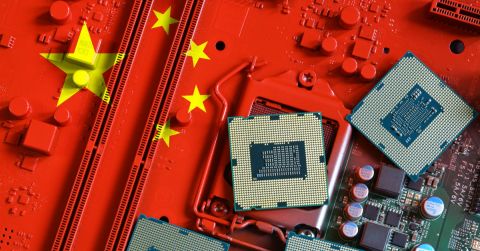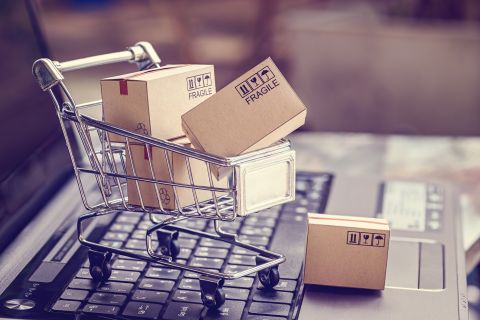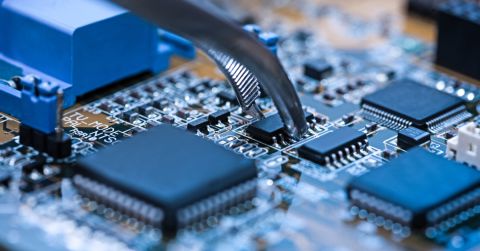How Can Port Automation Reduce Lead Times and Shipping Costs?

There’s no doubt about the fact that technology will play a critical role in streamlining port operations—and right so. Automation is inevitable in most supply chain situations, but it will be those who adopt this infrastructure first that will ease the burden of increasingly high throughput.
While it’s near certain that artificial intelligence (AI) will reduce lead times and shrink the costs involved in global shipping movements, ports have a number of challenges to consider before they reap the entire benefit of automation; digital connectivity across their port management systems.
Costs will be reduced through seamless operation, delivery times will be shorter as a result of critical path optimization, but the external factors in this may determine the success or failure of autonomous seaport systems.
What are the Current Challenges Faced by Ports?
Digitalization is a response to the mounting pressures of supply chain growth. To fully embrace its potential in port operations, companies must look at the challenges they face and how they could develop over time. Those that embrace the perspectives of all stakeholders will provide results that benefit all, from the port workers to upstream distributors.
Labour Shortages
In October 2024, the global port trade industry received a wake-up call, asserting the need for greater resilience in their operations systems. Dockworkers do not want bots taking their jobs, as expressed throughout months of protests in 2024. This is not to say that technology is the answer to the downtime these protests cause, but, more importantly, that port operators must find ways to reassure staff that advanced systems can aid and enhance their work.
This poses a unique challenge as automation and AI will inevitably make their way into the industry, but adopters must tread carefully.
Port Congestion
There are various factors that influence the past and present rates of port congestion. As trade continues to grow, with countries interconnected in their efforts, conflict has a role to play in the slowdown of shipping ports.
Disruption comes from two types of conflict: war along some of the world’s major shipping routes (for example: diversions resulting from Houthi attacks off the coast of Yemen) and the trade wars taking place between continents (China and US dealings being one of the main contributors to rising trade tariffs and changes to shipping requirements).
Couple high throughput with these events and ports begin to realise they need to reduce lead times to make space for disruptions.

Risk Management
The risk management process is more than an effort to protect shipments, but the ability to navigate these challenges with minimal impact on their output. Ports must also consider their stakeholders in these instances, and become proficient at communicating lead times in order to inform both the distributors and buyers of PCBs.
This is where technology will show its strengths, but with workers concerned about the future of automation across ports, they require a delicate balance of efficiency and control in their work. Automation could prove beneficial for all parties from an information standpoint: tracing consignments, predicting delivery times, managing workloads, and overall transparency around shipments.
Environment
Much like all emissions-intensive industries, ports have a role to play in reducing the supply chain’s impact on the environment. With global shipping carbon emissions exceeding 1,000 million tonnes, there is an inherent need to consider the footprint of all port handling processes and machinery.
Seaport Cost Optimization and Efficiency
The workforce’s ‘doom and gloom’ feeling aside, there are major benefits of automation—bringing with it the potential to streamline their workloads and ease the burden of growing trade and increased risks. All parties are set to benefit from automation, providing adoption is carried out with all stakeholders considered.
Supply Chain and Energy Efficiency
Efficiency is a long-term goal, driven by a number of things. The introduction of robotics for container handling, automated cranes, and intelligent conveyor systems will be beneficial for the bottom line, but also improve the turnaround time from consignments reaching ports to departure—likewise, the receipt of shipments and sending them on their way.
With automation comes better insight into critical pathways in at ports, meaning operators can leverage digital systems to better understand the pitfalls in their processes. In the modern supply chain, this relies on greater insight from various data points, which relies on the integration of a digital ecosystem. In turn, data can be leveraged to new-world challenges, such as reducing energy consumption and improving other measures like safety.
Safety and Security
Experts have argued that automation is critical for the future of supply chain activities, and with all the efficiency considerations and cost benefits, safety and security are crucial factors in the success of its adoption. The October 2024 strikes emphasise the importance of social elements in the rollout of automation.
While Asian countries have made headway with automation across seaports and the US experiences backlash, Europe is taking a more measured approach inspired by current implementations.
Cost and Energy Efficiency
As the aforementioned environmental challenges weigh on the industry, automation as a strategy goes hand-in-hand with decarbonisation.
Automation will have a profound impact on ports’ energy consumption and, in turn, reduce their emissions while allowing them a profit from their alternative energy sources. As more and more operators adopt renewable energy solutions, there could also be potential to bolster the costs as they become ‘energy brokers’.

Current and Future Automated Seaports
Asian Seaport Automation
Asia’s technological and environmental prowess can be seen in its Qingdao Port—a first-of-a-kind hydrogen-powered, 5G activated hub. The port recognized the effects of increasing throughput and the solution of choice was a 3D intelligent, low-carbon system.
What this Means for the Asian Logistics
The seaport benefits from a fully automated, world-first intelligent overhead container delivery system, which was piloted in mid-2022. The adoption of this system has resulted in incredible efficiency gains as the systems reached 60.6 twenty-foot equivalent units (containers) per hour—the 11th world record broken by the autonomous system. Such efficiency in countries like China could be pivotal in maintaining its global competitiveness—a need driven by a global emphasis on PCB manufacturing.
US Seaport Automation
All of the 10 operate some form of automated system, namely container track and status communication with automated gates systems. Otherwise, some seaports have adopted more advanced container movement mechanisms, which minimizes human input (the current pain point for dockworkers in the US.
What this Means for US Logistics
Despite the safety measures implied, the US workforce requires clearer understanding of the operational pros from an employment perspective. This is not uncommon in any industry as the labor force experiences its own concerns around AI and the use of unmanned and remote systems.
European Seaport Automation
Rotterdam, Hamburg, Antwerp-Bruges, Valencia and Barcelona are home to the continent’s top automated ports, leveraging ‘smart port’ technologies to develop efficiently and sustainability in an increasingly consumerist world.
What this Means for European Logistics
While European port automation seems a laggard process compared to other continents, countries have made concrete plans to innovate in order to improve efficiency and build a platform for a higher volume of exports. As European countries invest heavily in consumer electronics, renewable energy, electrified transport, and its own PCB industry, its ports will need to evolve.










 Back
Back